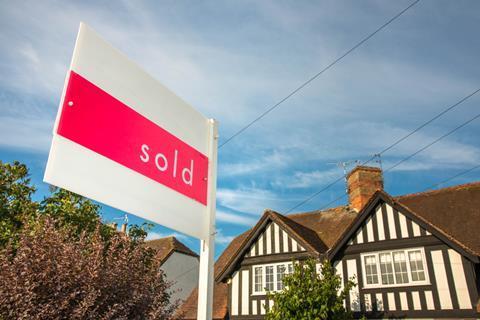Zoopla says demand still dropping back but predicts no fall in prices in 2021
Annual house price growth has risen to 3.5% according to the latest data from Zoopla, despite demand for homes continuing to fall from the summer highs that followed the end of the first lockdown.
Zoopla’s monthly house price index shows prices rebounding in October to 3.5% after annual growth dropped to 2.9% in September. Month on month prices grew by 0.7% to an average of 223,500, according to the online property portal.

The firm said that demand for homes had now fallen below the level seen prior to the covid crisis for the first time since lockdown, but remained 34% above the level seen at this time last year.
In addition, it said agreed sales were running 38% above the level in October last year, contributing to a very large pipeline of transactions waiting to be completed.
The firm said it expected the number of sales to be completed in 2020 to be just 6% below that seen in 2019, despite the temporary closure of the housing market in the first lockdown and all the disruption caused by the coronavirus pandemic.
The total number of sales, it said, is now predicted to match the number made in 2019.
Richard Donnell, research and insight director at Zoopla said he now expected only modest fall back in house price growth in 2021, with the firm predicting 1% growth next year.
This is despite continued concern over the impact of the end of the Stamp Duty holiday in March, the closure of the furlough scheme, deepening economic problems and the move to a new, less generous Help to Buy scheme.
He said: “The scale of any downside for house prices and turnover in 2021 is lower than in previous downturns – a result of already low liquidity and no excessive overvaluation of house prices.”
Zoopla’s figures came after data from HM Revenue & Customs yesterday which showed residential transactions in October were, at 106,000, 8.1% higher in October than the same month last year, seasonally adjusted, and almost 10% higher than September.
However, transactions in the financial year-to-date, from April, have hit just 536,000, a drop of almost a quarter on the number at the same point last year.
In response, estate agent Savills said the figures showed sales at their highest level since the spike in 2016 prior to the introduction of a stamp duty surcharge for second homes. Otherwise, it is the highest number of residential transactions since 2007, prior to the global financial crisis.
Lucian Cook, Savills head of residential research said the level of completions reflected sales being agreed between the first and second lockdown, “when the market was being fuelled by a combination of pent up demand and substantially increased activity from those looking to trade up the housing ladder given their experience of living and working from home.”
He said recent agreed sales had dropped off by around 12%, but that, nevertheless they remained well above levels seen in the same period last year, particularly in the market over £500k. He said: “That suggests the experience of the second lockdown has reaffirmed people’s changed housing priorities, which is likely to support activity through to the end of the stamp duty holiday.
“While transactions in the year to date are 18% below last year, it now looks as though they will exceed 1m for the year, something pretty much unthinkable six months ago.”











No comments yet